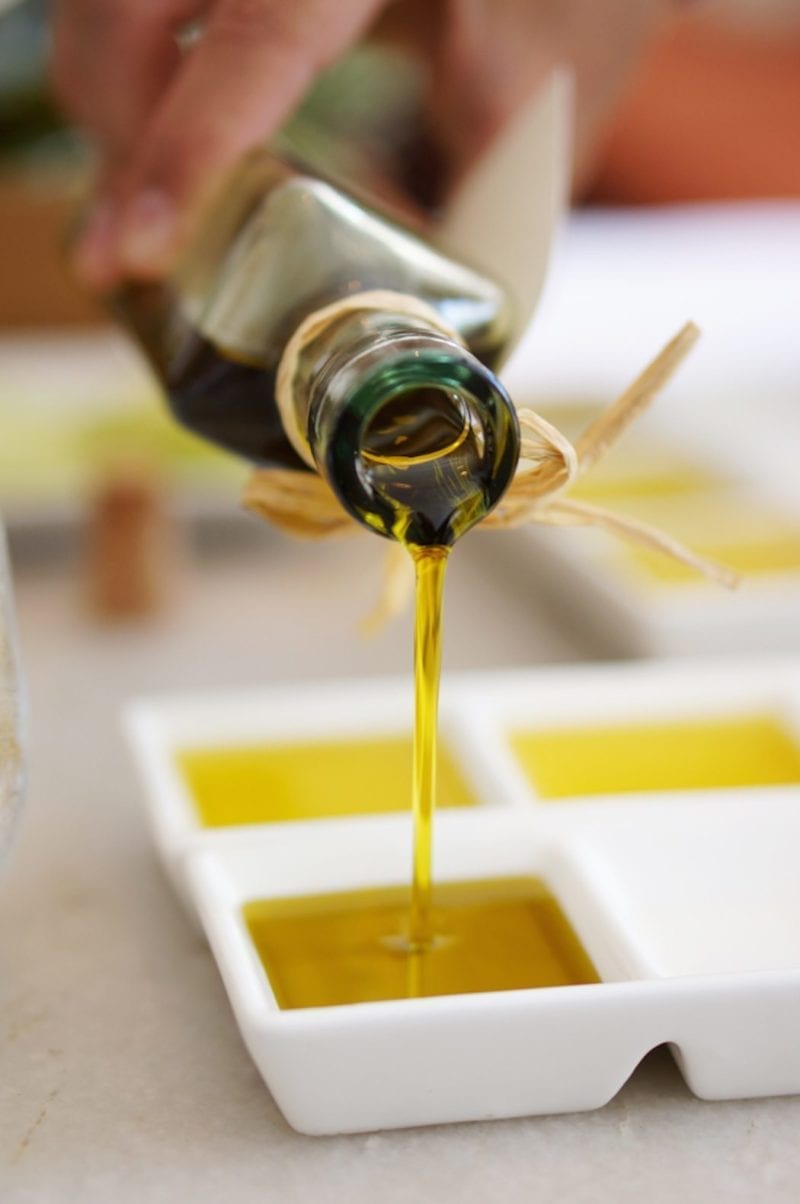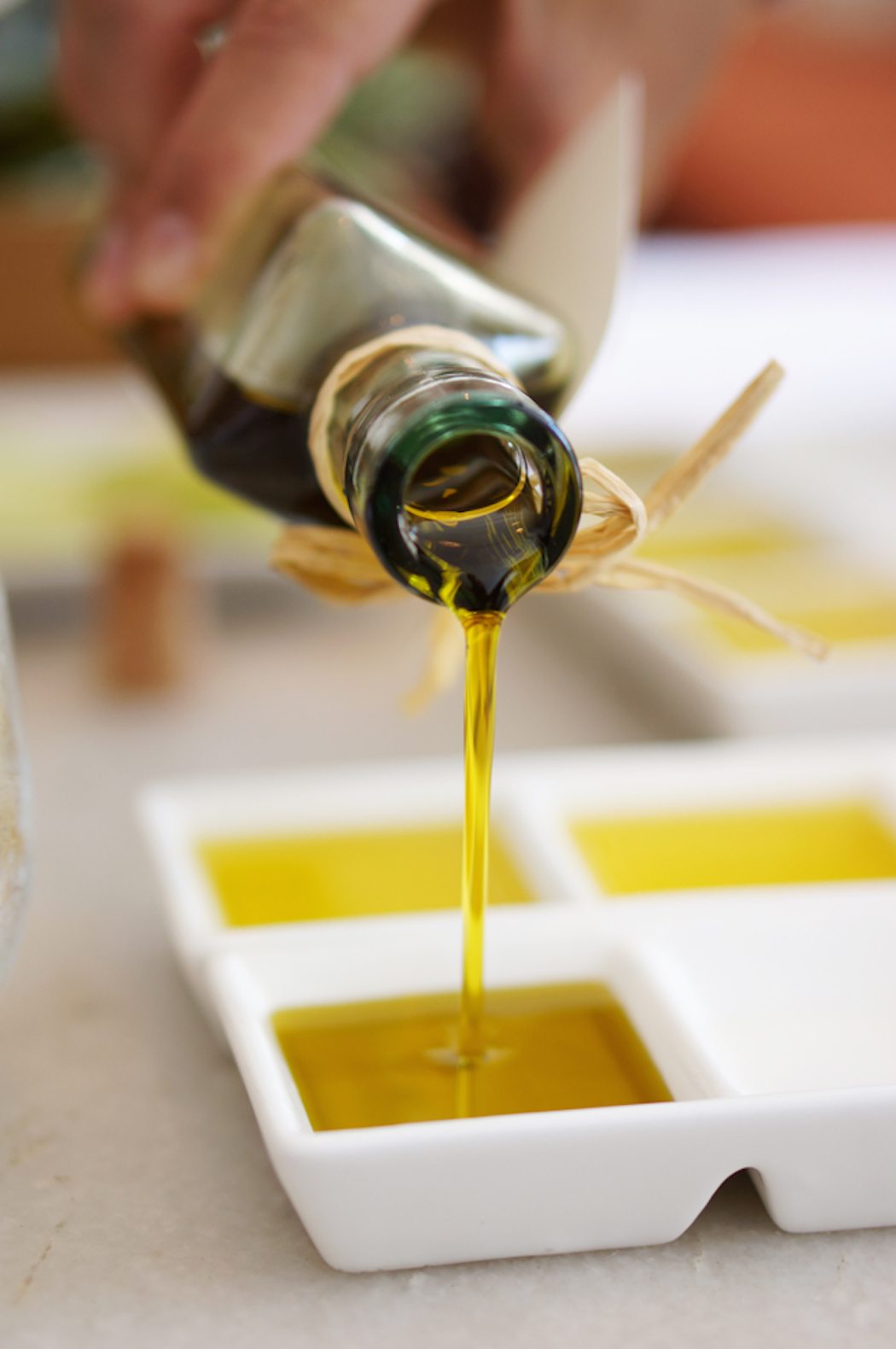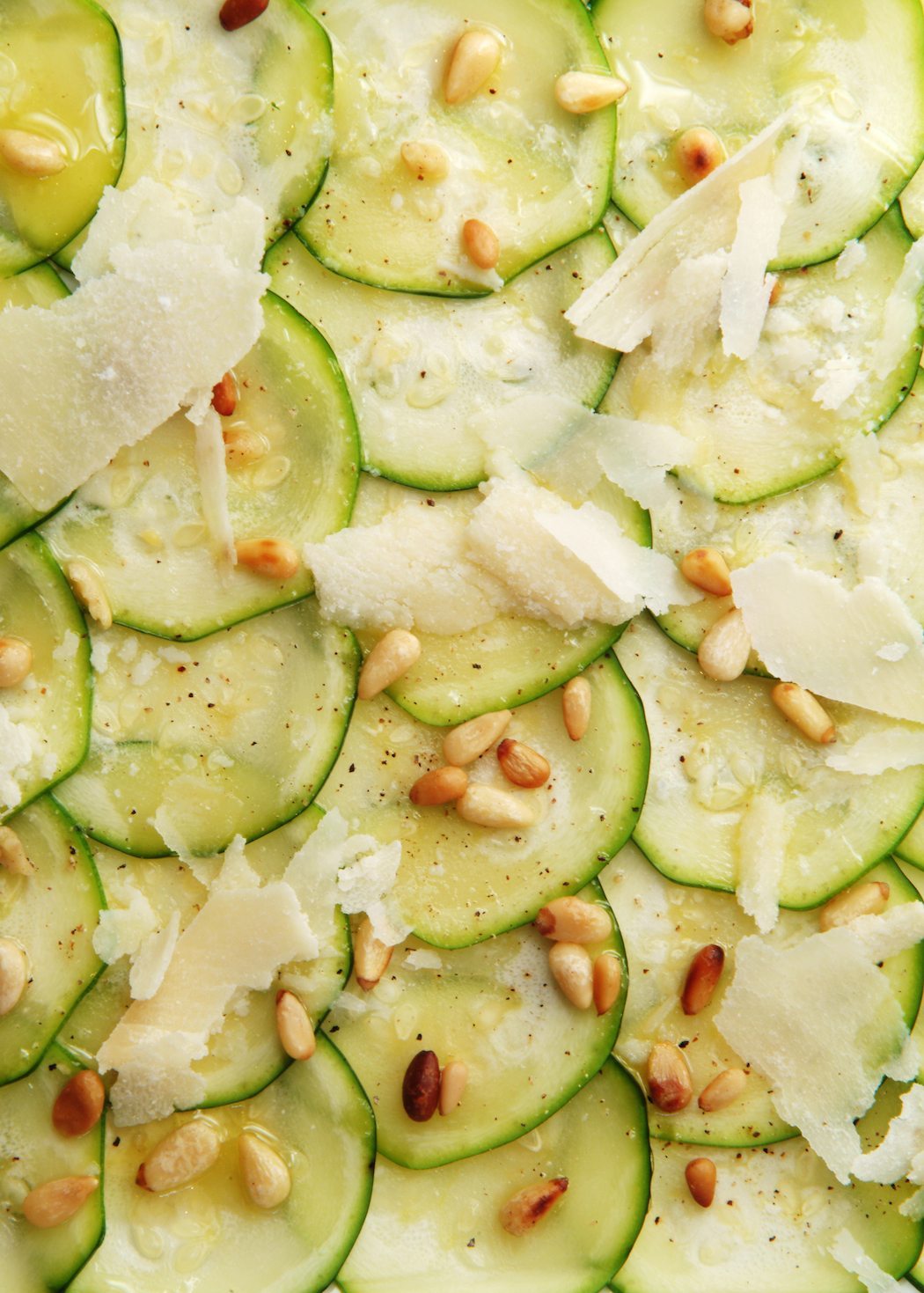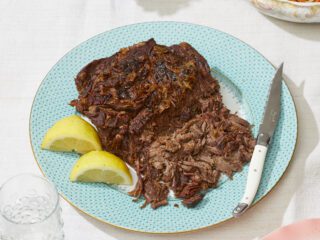As a lover of food and flavor, I adore exploring well curated and unique restaurants all over the country. I recently had the opportunity to experience Fig & Olive of Los Angeles, a local Italian eatery flooded with artisanal olive oils and Italian-everything in abundance.
As part of each meal you’re given various olive oils and the opportunity to taste each one. Through my dining experience, I learned that tasting olive oil can truly be an art.
Fig & Olive’s founder, Laurent Halasz, has put together a guide for tasting olive oil that she shares with us, here:
Selecting the appropriate oils is key to understanding the dramatic difference each olive oil possesses.
Here’s what you will need:
- 4 wine glasses
- 4 different olive oils
We would suggest:
- Oleum Priorat Vitae – Spain
- Castelines – France
- FIG & OLIVE Frantoio – Australia
- Marques de Grinon – Spain
- Glass of water
- Sliced green apple
Pour about 2 tablespoons of olive oil into each wine glass. Warm the glass by cupping it and keep the bottom of your hand around the oil to slightly warm it up, bringing out the fragrance of the oil. Cover the glass while swirling to keep in the aroma.
Smell the oil about three times, looking for some of these notes:
Aroma Descriptors Include: apple, almond, artichoke, astringent (a puckering sensation), banana, bitter, buttery, fresh, fruity, grass, green, green leaf, harmonious, hay, melon, perfumy, musky, nutty, woody, peppery, pungent, and rotund.
Note: Avoid oils that taste briny, burnt, coarse, musty, earthy, flat, or winey. That is a tell tale sign of being expired with flavor, old or poorly made. Although they will never negatively affect your health, they certainly won’t help your cooking.
Next, swallow and wait. Take two quick drags of air through your teeth to finish the tasting. You should get the oil’s aftertaste in a few seconds.
You’re looking for a fruitiness, “green” or “sweet” and a “green grass” or “leafy” smell, and also possibly some bitterness. In olive oil, bitterness is good. Ideally, you should get a balanced sensation of fruitiness, bitterness, and pungency, which tells you it’s a good oil.
Now write down your notes and continue on the next oil. Eat a piece of a green apple slice to cleanse your palette between each tasting.
My favorite part of dining with Fig & Olive was taking a bottle of the olive oil home. They source from all over the world, and you can actually purchase any of their products online as well!
As an extra bonus, here is a recipe the chefs shared with us, below. Happy Cooking!
Zucchini Carpaccio from Fig & Olive
Serves 6-8
1 lb zucchini, sliced paper thin*
1/4 cup extra virgin olive oil
Juice of 1 lemon
Salt and freshly ground black pepper
4 T shaved Parmigiano Reggiano
4 T toasted pine nuts
Arrange the zucchini slices, slightly overlapping, on a large, flat platter. Cover with plastic wrap. Refrigerate until ready to serve.
In a small bowl whisk the olive oil and lemon juice. Just before serving, whisk the olive oil dressing briefly to blend it, drizzle it over the zucchini, season with salt and pepper, scatter the cheese and the pine nuts on top, and serve.
*Use a mandolin or vegetable peeler to thinly slice the zucchini
Images provided by Fig and Olive














1 comment
I never knew Olive Oil had so many characteristics. Sounds like an experiment I’d like to try.